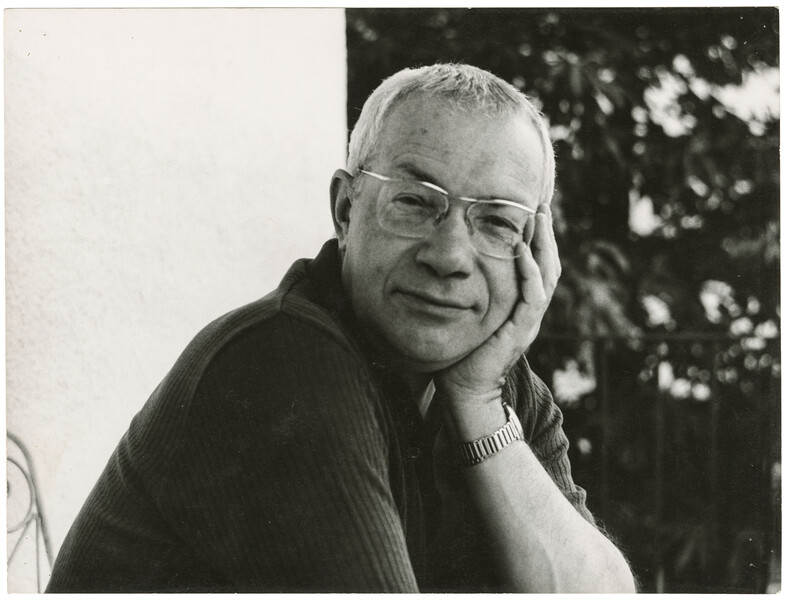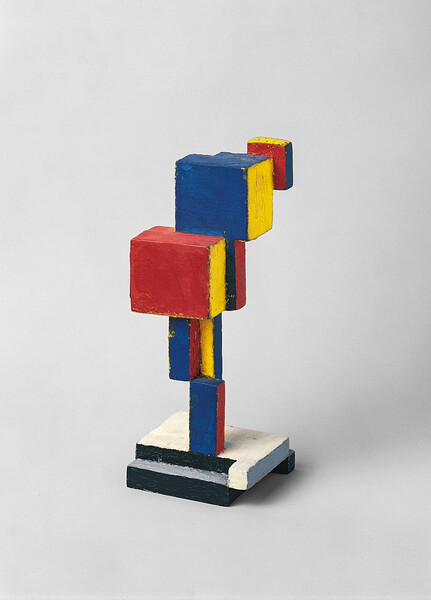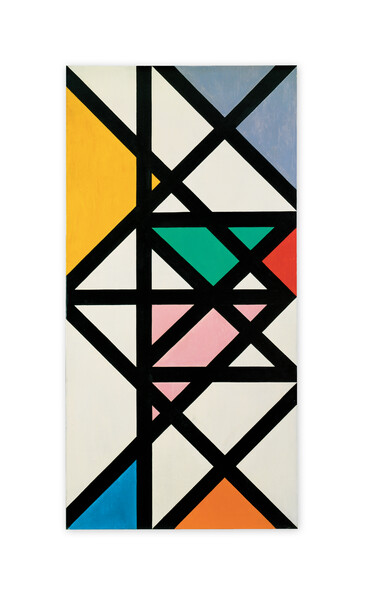Max Bill and Georges Vantongerloo: A Lasting Friendship
Announcing worldwide representation of the Max Bill Georges Vantongerloo Stiftung
Despite maintaining entirely distinct artistic practices, Max Bill and Georges Vantongerloo were bound together in their desire to forge new developments in the field of twentieth-century abstraction, and by their lifelong friendship. Their close relationship and an extended personal written correspondence – which unfolded over the course of more than three decades – united their independent artistic and intellectual endeavours, and helped each to push the boundaries of his work to the fullest. The progress of this extraordinary creative exchange mirrors the artistic and philosophical breakthroughs that defined the last century.

Max Bill in Montagnola, 1974 © Angela Thomas Schmid / 2019, ProLitteris, Zurich. Photo: Angela Thomas

Georges Vantongerloo in his studio, Paris, 1951 © Angela Thomas Schmid / 2019, ProLitteris, Zurich. Photo: Reinhart Wolf
Max Bill (1908 – 1994) was a great Swiss polymath: an artist, architect, industrial designer, graphic designer, and teacher. He attended the Bauhaus where he was taught by Josef Albers, László Moholy-Nagy, Paul Klee, Wassily Kandinsky and Oskar Schlemmer. Bill remained closely associated with the Bauhaus school and was a key figure in developing and propagating its principles, especially through his professorship at the Kunstgewerbeschule Zürich and as a founder of the Ulm School of Design. Through his pursuit of a new visual language that could be understood by the senses alone, Bill defined the conventions of Swiss design for decades to come. His influence spread even as far as South America, where he was a catalyst for the Concrete Art movement.
Georges Vantongerloo (1886 – 1965), born in Antwerp, Belgium, was an artist, architect, and theorist who became a member of the De Stijl group. While living in Holland and working on architectural designs during the years of World War I, Vantongerloo became part of the circle of Piet Mondrian, Bart van der Leck, and Theo van Doesburg, who founded the magazine ‘De Stijl’ in 1917. Soon after his return to Brussels in 1918, he moved to France, where he met Max Bill, who would become a lifelong friend and the organizer of many Vantongerloo exhibitions. In 1924 Vantongerloo published his pamphlet ‘L’Art et son avenir’ and in 1931 joined the Abstraction-Création group, which counted among its members Piet Mondrian, Barbara Hepworth, Robert and Sonia Delaunay, Hans Arp and Sophie Taeuber-Arp, Wassily Kandinsky, Josef Albers, László Moholy-Nagy and Max Bill. From the end of the 1930s onward, Vantongerloo distanced himself from the straight line in favour of the curved line, producing influential work characterized by greater lyrical compositions and plays of transparency, colour, and light.

Max Bill, Einheit aus drei gleichen Zylindern (Whole made out of three identical cylinders), 1966 © Angela Thomas Schmid / 2019, ProLitteris, Zurich

Georges Vantongerloo, Composition émanante de l’ovoïde (Composition from the Ovoid), 1917 © Angela Thomas Schmid / 2019, ProLitteris, Zurich
After Vantongerloo’s death in 1965, Bill became a critical advocate for and preserver of the artist’s profound influence and legacy of innovation. The Max Bill Georges Vantongerloo Stiftung was established by Bill’s widow, the independent curator and scholar Dr. Angela Thomas Schmid, to represent the part of these two artists’ estates entrusted to her care. The Stiftung is based at Haus Bill in Zumikon on the outskirts of Zurich, where it is overseen by Dr. Angela Thomas Schmid and her husband filmmaker Erich Schmid. Hauser & Wirth looks forward to developing each artist’s legacy through a series of dedicated projects, including exhibitions, publications, and the commissioning of new scholarship.
In the first of a number of publishing projects, in late 2019 Hauser & Wirth Publishers will publish an English-language edition of Dr. Angela Thomas Schmid’s monograph on Max Bill, ‘Mit subversivem Glanz. Max Bill und seine Zeit. Band 1: 1908 – 1939’. As the inaugural collaboration with the Max Bill Georges Vantongerloo Stiftung, and in celebration of the Bauhaus centenary in 2019, Hauser & Wirth will mount a major exhibition devoted to the Bauhaus at Hauser & Wirth Zürich in June 2019. Curated by Dr. Angela Thomas Schmid, and entitled ‘max bill. bauhaus constellations’, the exhibition will explore the dynamic dialogues that evolved within the group of artists Bill encountered at the influential German school (1919 – 1933). Works from the artist’s own collection will be presented along with archive materials he assembled during his lifetime, as well as significant works by Josef Albers, Wassily Kandinsky, Paul Klee, László Moholy-Nagy, Kurt Schwitters, Oskar Schlemmer, Sophie Taeuber-Arp and Georges Vantongerloo.
‘max bill bauhaus constellations’ is on view at Hauser & Wirth Zürich from 9 June – 14 September 2019.
‘Georges Vantongerloo. A Pioneer of Modern Art’ is on view at Hauser & Wirth Rämistrasse from 8 July 2020.

Max Bill, Horizontal-Vertikal-Diagonal-Rhythmus (Horizontal-Vertical-Diagonal Rhythm), 1942 © Angela Thomas Schmid / 2019, ProLitteris, Zurich

Georges Vantongerloo, Fonction des lignes (Function of the lines), 1937 © Angela Thomas Schmid / 2019, ProLitteris, Zurich
